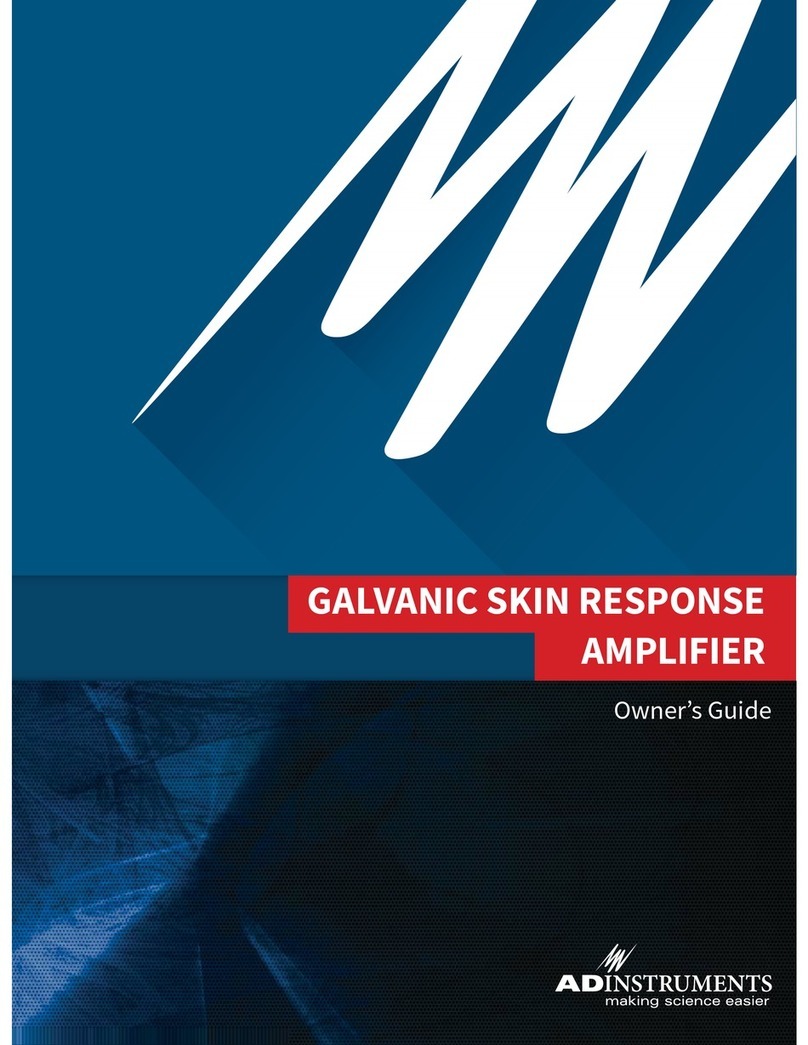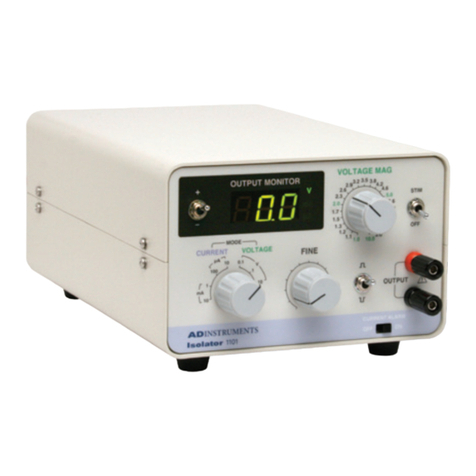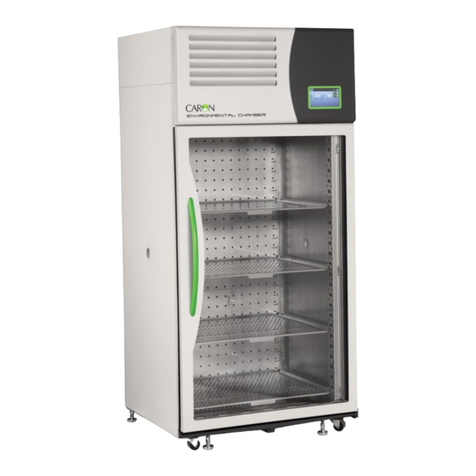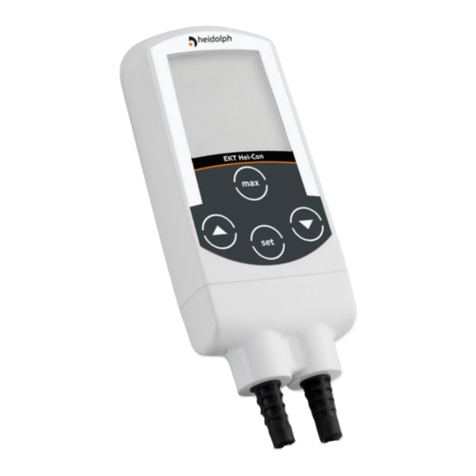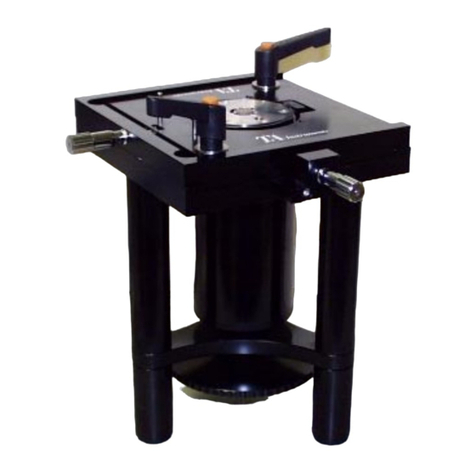ADInstruments PowerLab 30 Series User manual

PowerLab®
/30 Series
Owner’s Guide

PowerLab Owner’s Guide
ii
This document was, as far as possible, accurate at the time of release. However, changes
may have been made to the software and hardware it describes since then.
ADInstruments Pty Ltd reserves the right to alter specifications as required. Late-
breaking information may be supplied separately.
Trademarks of ADInstruments
PowerLab®, LabChart®, LabTutor®, LabAuthor®and MacLab®are registered trademarks of
ADInstruments Pty Ltd. The names of specific recording units, such as PowerLab 8/30,
are trademarks of ADInstruments Pty Ltd. LabTutor Server, Chart and Scope (application
programs) and LabTutor Online are trademarks of ADInstruments Pty Ltd.
Other Trademarks
Apple, Mac and Macintosh are registered trademarks of Apple Computer, Inc.
Windows, Windows 7, Windows Vista and Windows XP are either registered trademarks
or trademarks of Microsoft Corporation.
All other trademarks are the property of their respective owners.
Product: ML866 PowerLab 4/30; ML870 PowerLab 8/30; ML880 PowerLab 16/30
Document Number: U-ML870/OG-003G
Part Number: 5351
Copyright © December 2009 ADInstruments Pty Ltd.
Unit 13, 22 Lexington Drive, Bella Vista, NSW 2153, Australia
All rights reserved. No part of this document may be reproduced by any means without
the prior written permission of ADInstruments Pty Ltd.
Web: www.adinstruments.com
Technical Support: support.au@adinstruments.com
Documentation: documentation@adinstruments.com
ADInstruments Pty Ltd. ISO 9001:2000 Certified Quality Management System
Reg. No. 1053

Contents iii
Contents
Safety Notes 5
1 Overview 11
How to Use This Guide . . . . . . . . . . . . . . . . . . . . . . . . . . . . . . . . . . . . 12
The PowerLab System . . . . . . . . . . . . . . . . . . . . . . . . . . . . . . . . . . . . . 12
First, Install the Software . . . . . . . . . . . . . . . . . . . . . . . . . . . . . . . . . 12
Next, Check Your PowerLab . . . . . . . . . . . . . . . . . . . . . . . . . . . . . . . 13
Other ADInstruments Hardware . . . . . . . . . . . . . . . . . . . . . . . . . . . . 13
The PowerLab . . . . . . . . . . . . . . . . . . . . . . . . . . . . . . . . . . . . . . . . . 14
The Front Panel . . . . . . . . . . . . . . . . . . . . . . . . . . . . . . . . . . . . . . 14
The Back Panel . . . . . . . . . . . . . . . . . . . . . . . . . . . . . . . . . . . . . . 17
2 Setting Up 21
The PowerLab Self-test . . . . . . . . . . . . . . . . . . . . . . . . . . . . . . . . . . . . 22
Connecting the PowerLab. . . . . . . . . . . . . . . . . . . . . . . . . . . . . . . . . . . 23
A Technical Aspects 25
How it Works. . . . . . . . . . . . . . . . . . . . . . . . . . . . . . . . . . . . . . . . . . 26
The Analog Inputs . . . . . . . . . . . . . . . . . . . . . . . . . . . . . . . . . . . . 27
The Analog Outputs . . . . . . . . . . . . . . . . . . . . . . . . . . . . . . . . . . . 28
PowerLab Accuracy . . . . . . . . . . . . . . . . . . . . . . . . . . . . . . . . . . . . 28
The External Trigger . . . . . . . . . . . . . . . . . . . . . . . . . . . . . . . . . . . 29
Connections . . . . . . . . . . . . . . . . . . . . . . . . . . . . . . . . . . . . . . . . . . 30
Pod Connectors . . . . . . . . . . . . . . . . . . . . . . . . . . . . . . . . . . . . . . 30
Serial Port . . . . . . . . . . . . . . . . . . . . . . . . . . . . . . . . . . . . . . . . . 30
I2C Expansion Socket . . . . . . . . . . . . . . . . . . . . . . . . . . . . . . . . . . . 31
Digital Input and Output Sockets . . . . . . . . . . . . . . . . . . . . . . . . . . . . 31
USB Connections . . . . . . . . . . . . . . . . . . . . . . . . . . . . . . . . . . . . . 32
Earthing and Ground Loop Noise . . . . . . . . . . . . . . . . . . . . . . . . . . . . . . 32
B Specifications 35
Glossary 41
Index 47

PowerLab Owner’s Guide
iv

Safety Notes 5
Statement of Intended Use
All products manufactured by ADInstruments are intended for use in
teaching and research applications and environments only. ADInstruments
products are NOT intended to be used as medical devices or in medical
environments. That is, no product supplied by ADInstruments is intended to
be used to diagnose, treat or monitor a subject. Furthermore no product is
intended for the prevention, curing or alleviation of disease, injury or
handicap.
Where a product meets IEC 60601-1 it is under the principle that:
• it is a more rigorous standard than other standards that could be chosen,
and
• it provides a high safety level for subjects and operators.
The choice to meet IEC 60601-1 is in no way to be interpreted to mean that a
product:
• is a medical device,
• may be interpreted as a medical device, or
• is safe to be used as a medical device.
Safety Notes

PowerLab Owner’s Guide
6
Safety Symbols
Devices manufactured by ADInstruments that are designed for direct
connection to humans are tested to IEC 601-1:1998 (including amendments 1
and 2) and 60601-1-2, and carry one or more of the safety symbols below.
These symbols appear next to those inputs and output connectors that can be
directly connected to human subjects.
The three symbols are:
• BF (body protected) symbol. This means that the input connectors are
suitable for connection to humans provided there is no direct electrical
connection to the heart.
• CF (cardiac protected) symbol. This means that the input connectors are
suitable for connection to human subjects even when there is direct
electrical connection to the heart.
• Warning symbol. The exclamation mark inside a triangle means that the
supplied documentation must be consulted for operating, cautionary or
safety information before using the device.
Further information is available on request.
Bio Amp Safety Instructions
The Bio Amp inputs displaying any of the safety symbols are electrically
isolated from the mains supply in order to prevent current flow that may
otherwise result in injury to the subject. Several points must be observed for
safe operation of the Bio Amp:
• All Bio Amp front-ends (except for the ML138 Octal Bio Amp) and
PowerLab units with a built-in Bio Amp are supplied with a 3-lead or 5-
BF symbol: Body-
protected equipment
CF symbol: Cardiac-
protected equipment
!
Warning symbol: ‘see
documentation’

Safety Notes 7
lead Bio Amp subject cable and lead wire system. The ML138 Octal Bio
Amp is supplied with unshielded lead wires (1.8 m). Bio Amps are only
safe for human connection if used with the supplied subject cable and lead
wires.
• All Bio Amp front-ends and PowerLab units with a built-in Bio Amp are
not defibrillator-protected. Using the Bio Amp to record signals during
defibrillator discharges may damage the input stages of the amplifiers.
This may result in a safety hazard.
• Never use damaged Bio Amp cables or leads. Damaged cables and leads
must always be replaced before any connection to humans is made.
Isolated Stimulator Safety
Instructions
The Isolated Stimulator outputs of a front-end signal conditioner or PowerLab
with a built-in isolated stimulator are electrically isolated. However, they can
produce pulses of up to 100 V at up to 20 mA. Injury can still occur from
careless use of these devices. Several points must be observed for safe
operation of the Isolated Stimulator:
• The Isolated Stimulator output must only be used with the supplied bar
stimulus electrode.
• The Isolated Stimulator output must not be used with individual
(physically separate) stimulating electrodes.
• Stimulation must not be applied across the chest or head.
• Do not hold one electrode in each hand.
• Always use a suitable electrode cream or gel and proper skin preparation
to ensure a low-impedance electrode contact. Using electrodes without
electrode cream can result in burns to the skin or discomfort for the
subject.
• Subjects with implantable or external cardiac pacemakers, a cardiac
condition, or a history of epileptic episodes must not be subject to
electrical stimulation.
• Always commence stimulation at the lowest current setting and slowly
increase the current.
• Stop stimulation if the subject experiences pain or discomfort.
• Do not use faulty cables, or those that have exhibited intermittent faults.
• Do not attempt to measure or record the Isolated Stimulator waveform
while connected to a subject using a PowerLab input or any other piece of
equipment that does not carry the appropriate safety symbol (see Safety
Symbols above).

PowerLab Owner’s Guide
8
Always check the status indicator on the front panel. It will always flash green
each time the stimulator delivers a current pulse. A yellow flash indicates an
‘out-of-compliance’ (OOC) condition that may be due to the electrode contact
drying up. Always ensure that there is good electrode contact at all times.
Electrodes that are left on a subject for some time need to be checked for dry
contacts. An electrode impedance meter can be used for this task.
• Always be alert for any adverse physiological effects in the subject. At the
first sign of a problem, stimulation must be stopped, either from the
software or by flicking down the safety switch on the front panel of any
built-in Isolated Stimulator or the ML180 Stimulus Isolator.
• The ML180 Stimulus Isolator is supplied with a special transformer plug
pack. The plug pack complies with medical safety requirements.
Therefore, under no circumstances should any other transformer be used
with the Stimulus Isolator. For a replacement transformer plug pack please
contact your nearest ADInstruments representative.
General Safety Instructions
To achieve the optimal degree of subject and operator safety, consideration
should be given to the following guidelines when setting up a PowerLab
system either as stand-alone equipment or when using PowerLab equipment
in conjunction with other equipment. Failure to do so may compromise the
inherent safety measures designed into PowerLab equipment. The following
guidelines are based on principles outlined in the international safety
standard IEC60601-1-1: General requirements for safety - Collateral standard:
Safety requirements for medical systems. Reference to this standard is required
when setting up a system for human connection.
PowerLab systems (and many other devices) require the connection of a
personal computer for operation. This personal computer should be certified
as complying with IEC60950 and should be located outside a 1.8 m radius
from the subject (so that the subject cannot touch it while connected to the
system). Within this 1.8 m radius, only equipment complying with IEC60601-
1 should be present. Connecting a system in this way obviates the provision of
additional safety measures and the measurement of leakage currents.
Accompanying documents for each piece of equipment in the system should
be thoroughly examined prior to connection of the system.
While it is not possible to cover all arrangements of equipment in a system,
some general guidelines for safe use of the equipment are presented below:

Safety Notes 9
• Any electrical equipment which is located within the SUBJECT AREA
should be approved to IEC60601-1.
• Only connect those parts of equipment that are marked as an APPLIED
PART to the subject. APPLIED PARTS may be recognized by the BF or CF
symbols which appear in the Safety Symbols section of these Safety Notes.
• Only CF-rated APPLIED PARTS must be used for direct cardiac
connection.
• Never connect parts which are marked as an APPLIED PART to those
which are not marked as APPLIED PARTS.
• Do not touch the subject to which the PowerLab (or its peripherals) is
connected at the same time as making contact with parts of the PowerLab
(or its peripherals) that are not intended for contact to the subject.
• Cleaning and sterilization of equipment should be performed in
accordance with manufacturer’s instructions. The isolation barrier may be
compromised if manufacturer’s cleaning instructions are not followed.
• The ambient environment (such as the temperature and relative humidity)
of the system should be kept within the manufacturer’s specified range or
the isolation barrier may be compromised.
• The entry of liquids into equipment may also compromise the isolation
barrier. If spillage occurs, the manufacturer of the affected equipment
should be contacted before using the equipment.
• Many electrical systems (particularly those in metal enclosures) depend
upon the presence of a protective earth for electrical safety. This is
generally provided from the power outlet through a power cord, but may
also be supplied as a dedicated safety earth conductor. Power cords should
never be modified so as to remove the earth connection. The integrity of
the protective earth connection between each piece of equipment and the
protective earth should be verified regularly by qualified personnel.
• Avoid using multiple portable socket-outlets (such as power boards)
where possible as they provide an inherently less safe environment with
respect to electrical hazards. Individual connection of each piece of
equipment to fixed mains socket-outlets is the preferred means of
connection.
If multiple portable socket outlets are used, they are subject to the following
constraints:
• They shall not be placed on the floor.
• Additional multiple portable socket outlets or extension cords shall not be
connected to the system.
• They shall only be used for supplying power to equipment which is
intended to form part of the system.

PowerLab Owner’s Guide
10
Cleaning and Sterilization
ADInstruments products may be wiped down with a lint free cloth moistened
with industrial methylated spirit. Refer to the manufacturer’s guidelines or the
Data Card supplied with transducers and accessories for specific cleaning and
sterilizing instructions.
Preventative Inspection and
Maintenance
PowerLab systems and ADInstruments front-ends are all maintenance-free
and do not require periodic calibration or adjustment to ensure safe
operation. Internal diagnostic software performs system checks during power
up and will report errors if a significant problem is found. There is no need to
open the instrument for inspection or maintenance, and doing so within the
warranty period will void the warranty.
Your PowerLab system can be periodically checked for basic safety by using
an appropriate safety testing device. Tests such as earth leakage, earth bond,
insulation resistance, subject leakage and auxiliary currents and power cable
integrity can all be performed on the PowerLab system without having to
remove the covers. Follow the instructions for the testing device if performing
such tests.
If the PowerLab system is found not to comply with such testing you should
contact your PowerLab representative to arrange for the equipment to be
checked and serviced. Do not attempt to service the device yourself.
Environment
Electronic components are susceptible to corrosive substances and
atmospheres, and must be kept away from laboratory chemicals.
Storage Conditions
• Temperature in the range 0–40 °C
• Non-condensing humidity in the range 0–95%.
Operating Conditions
• Temperature in the range 5–35 °C
• Non-condensing humidity in the range 0–90%.
Disposal
• Forward to recycling center or return to manufacturer.

Chapter 1 Overview 11
Yo u r P ow e r L a b ®recording unit, together with a range of specialized
application programs, provides a versatile data recording and analysis system
when used with a Windows or Macintosh computer. This chapter provides an
overview of the PowerLab system and describes the basic features, connectors
and indicators of the /30 series PowerLabs.
Note that the software on the Software Installer CD should be installed before
you connect the PowerLab to your computer.
1Overview

PowerLab Owner’s Guide
12
How to Use This Guide
This owner’s guide describes how to set up and begin using your PowerLab
recording unit. The chapters provide an overview of the PowerLab system (the
combined software and hardware package), and a more detailed look at the
features of your recording unit and its connection to your computer. The
appendices provide technical information about the recording unit and
solutions to problems. At the end of this guide is a glossary of hardware terms
and an index.
The specifications and diagrams included in the appendices are there to help
the more technically minded users to understand what the PowerLab can and
cannot do; they are not there for use as a service manual. Note: only an
authorized ADInstruments representative should repair the unit. If you
modify the recording unit yourself, you void any rights you have under
warranty.
The user’s guides for the LabChart and Scope application programs provide
detailed information about using the software of the PowerLab system for
acquiring, storing and analyzing data. Read them after you have connected
the PowerLab to your computer.
The PowerLab System
The PowerLab system is an integrated system of hardware and software
designed to record, display and analyze experimental data. The hardware
includes the PowerLab recording unit and various ancillary devices (front-
ends, pods and so on); the software consists of the LabChart and Scope
application programs, and supplementary modules and extensions, which run
on the computer to which the PowerLab is connected.
Your /30 PowerLab has considerable computing power of its own and
performs many tasks during data recording. Once the PowerLab transfers
data to the computer, it is available for display, manipulation, printing, storage
and retrieval. The PowerLab 4/30 has four inputs for recording external
signals, the 8/30 has eight and the 16/30 has sixteen.
First, Install the Software
Two main application programs and their documentation are provided with
each PowerLab. The LabChart application emulates a multi-channel chart
recorder (of up to 16 channels, depending on the PowerLab model). Scope

Chapter 1 Overview 13
emulates a two-channel storage oscilloscope. Both provide many powerful
features, including channel calculations, triggering options, software-
controlled stimulus generation and automated recording and analysis. Please
consult their user’s guides for full descriptions.
You must install the software to use your PowerLab. Full installation
instructions are included in the Getting Started with PowerLab manual.
Next, Check Your PowerLab
Please do not attempt to connect the PowerLab to a power outlet or computer
or turn it on until you have read the first two chapters of this guide, and have
checked it as described below.
1. Check that all items in the accompanying packing list are included in the
box.
2. Check that there are no signs of external damage to the PowerLab.
3. Check that there are no obvious signs of internal damage, such as rattling.
Pick up the PowerLab, tilt it gently from side to side, and listen for
anything that appears to be loose.
If anything is missing, or the PowerLab seems to be damaged in any way,
contact your authorized ADInstruments representative immediately and
describe the problem. Arrangements can be made to replace or repair the
PowerLab. Up-to-date contact addresses are available in the software and
from the ADInstruments website.
Other ADInstruments Hardware
ADInstruments has a range of optional ancillary devices that can be
connected to the PowerLab to extend the system’s capabilities. They afford
extra signal conditioning and other features, and extend the types of
experiments you can conduct and the data you can record. Front-ends are
advanced signal conditioners (the Bio Amp front-end, for instance, lets you
perform electrically isolated measurements of biological signals). Pods are
basic signal conditioners, more limited (but cheaper) than front-ends.
Both are automatically recognized by the PowerLab system and integrated
into its programs, operating under full software control. Various transducers
can plug into a PowerLab, front-end or pod, depending on their type. A
PowerLab can usually have as many front-ends, pods, stand-alone
instruments or transducers connected to it as it has appropriate connectors
and available input channels. All are easily added to or transferred among
PowerLabs. Full information on such hardware is available from your local
ADInstruments representative or from the ADInstruments website.

PowerLab Owner’s Guide
14
The PowerLab
It is a good idea to get familiar with some of the external features of your
PowerLab before connecting it to a power source. The rest of this chapter
discusses the different features, connectors and indicators of the /30 series
PowerLabs.
The Front Panel
The front panel of your PowerLab provides most of the connectors for
obtaining external signals, and indicators for various functions. This section
describes each of the front panel features.
The PowerLab 4/30 has three indicators at the left of the front panel, one BNC
connector for the external trigger, two BNC connectors for analog output and
four BNC connectors (marked Input 1 - 4) with four alternative pod (DIN)
connectors for Inputs 1 - 4, for recording external signals.
The front panel of the PowerLab 8/30 is similar to the PowerLab 4/30 except it
has eight BNC connectors (marked Input 1 - 8) with four alternative pod
(DIN) connectors for Inputs 1 - 4, for recording external signals.
Trigger
Analog output
connectors
Power and
Status
Indicators
Pod (DIN) connectors
Analog input connectors
Figure 1–1
The front panel of the
PowerLab 4/30
Analog output
connectors Analog input connectors
Power and
Status
Indicators
Trigger Pod (DIN) connectors
Figure 1–2
The front panel of the
PowerLab 8/30

Chapter 1 Overview 15
The front panel of the PowerLab 16/30 is also similar to the other two
PowerLabs except it has sixteen BNC connectors (marked Input 1 - 16) with
four alternative pod (DIN) connectors for Inputs 1 - 4, for recording external
signals.
Indicators
All three labeled indicators on the front panel should turn on at least briefly
while the PowerLab is started up. Under normal conditions, the Power
indicator should glow blue and then stay lit, the Status indicator should flash
yellow and then stay green and the Trigger indicator should flash yellow and
then turn off. The Power indicator is a blue light, which simply shows that the
PowerLab is getting power. When an external trigger signal is received, the
Trigger indicator will glow yellow.
The Status indicator provides some visual indication of what the PowerLab is
doing, and will flash different patterns and colors depending on the state of
the PowerLab.
Status Indicator Meaning
Off Idle and not yet initialized by the software.
Green Idle, initialized, and waiting for a command from the computer.
Yellow Sampling, or communicating with the computer.
Four red flashes
then one yellow
The PowerLab has detected a low-level software or hardware
fault. It will repeat until the PowerLab is turned off.
Red flashes The PowerLab has detected an internal fault during the
power-up test. It will repeat until the PowerLab is turned off.
Figure 1–3
The front panel of the
PowerLab 16/30
Trigger
Analog output
connectors Analog input connectors
Power and
Status
Indicators
Pod (DIN) connectors
Table 1–1
Status indicator states

PowerLab Owner’s Guide
16
Trigger
The external trigger connector allows you to use an external signal to
synchronize recording to the external event. This input can handle voltages of
up to ±12 V. The threshold voltage (the voltage above which the trigger circuit
activates) is 1.5 volts for a rising edge. When the trigger threshold is crossed,
the indicator beside the external trigger connector will glow yellow. The
external trigger is described in more detail in Appendix A, and the software
documentation covers its practical use in normal recording.
Analog Output
The PowerLab can generate a stimulus voltage through analog output
connectors (marked Output 1 and Output 2), giving positive, negative,
differential, or independent stimuli, depending on the connectors used and
the software settings. By default, the outputs are used for complementary
(differential) stimulation, where Output 1 is positive and Output 2 is negative.
When Output 1 is used, a positive stimulus (set up in the software) gives a
positive voltage, and a negative stimulus gives a negative voltage. When
Output 2 is used, the voltage outputs are inverted. When both outputs are
used, the stimulus is the difference between the voltages at the positive and
negative outputs: a pulse of 20 V could be generated using a setting of ±10 V.
Analog Inputs
The analog inputs receive external signals up to ±10 V. Each input has an
independently programmable gain amplifier, filtering, and AC/DC coupling.
Set up each input with the software, for your requirements. Input signals can
be as low as the microvolt (μV) range without the need for external
amplification. Note: applying more than ±15 V to the analog inputs can
damage the circuitry.
The PowerLab 4/30 has four independent analog inputs (Input 1 – 4), all of
which have alternative connectors. The PowerLab 8/30 has eight independent
analog inputs (Input 1 – 8), the first four of which have alternative connectors.
The PowerLab 16/30 has sixteen independent analog inputs (Input 1 – 16),
the first four of which have alternative connectors. The BNC connectors for
Inputs 1 - 4 can be used for single-ended input, and the 8-pin DIN pod
connectors can be used for either single-ended or differential input. Single-
ended inputs record the difference between signal and ground, whereas
differential inputs record the difference between positive and negative input
signals.
On /30 series PowerLabs, the impedance between the earthing stud (ground
connection) and the input connector grounds is 100 Ohms.
SWARNING
PowerLab analog inputs
and outputs are not
electrically isolated.
Human subjects must not
be connected to the
PowerLab analog outputs
and inputs either directly,
or with uninsulated
transducers. If such
measurements are to be
made, an electrically
isolated ADInstruments
front-end, insulated
transducer or other
approved electrically
isolated device must be
used (for example, the
Bio Amp inputs or Isolated
Stimulator outputs on some
PowerLabs and front-ends)

Chapter 1 Overview 17
Do not attempt to record from both the BNC and DIN pod connectors for any
one input at the same time, or the signals will compete.
Pod connectors allow the connection of ADInstruments pods – small, low-
cost units for specific tasks, for use with precalibrated transducers.
Transducers should not be connected directly to the pod connectors on a
PowerLab, unless labeled to do so (unsuitable transducers will give a very
weak signal). Transducers designed for direct connection receive power and
control signals, since the pod connectors also provide some of the functions of
the I2C output.
The Back Panel
The PowerLab back panel provides the ports to connect the PowerLab to the
computer, front-ends, the power outlet and so on. This section describes each
of the back panel features. The back panel is the same for all the /30 series
PowerLabs.
I2C Output Socket
The I2C Output socket provides power and communications for
ADInstruments front-ends. Many front-ends can be daisy-chained together
and connected to the I2C port, as long as there are enough analog inputs on
the PowerLab for the front-ends. The maximum current provided through
this socket is 50 mA, so it should not be used for third-party devices that draw
more current than that.
USB port
The PowerLab connects to your computer by USB ports and a cable. This
requires a computer with USB ports or a PCI USB card installed.
In most cases, you can turn on or off, or disconnect or reconnect, a USB-
connected PowerLab safely while the computer remains on. However, you
I2C Output socket
USB port
Serial port Ground
Power socket
Power switchDigital Output socket Cooling fan
Digital Input socket
Figure 1–4
The back panel of the
PowerLab 4/30, 8/30
and16/30

PowerLab Owner’s Guide
18
must not be running applications (LabChart or Scope) while you do this.
Read the details on USB in Appendix A of this guide before connecting your
PowerLab to your computer by USB.
Serial Port
The PowerLab is fitted with an RS-485 serial communication port. It is not
currently in use, but is meant for connection in the future to specialized
devices controlled from the PowerLab system.
Digital Input and Output Sockets
The Digital Input and Output sockets let you monitor and control external
devices, respectively, with the PowerLab.
The digital input monitors state changes: you can have a predefined comment
inserted automatically during recording, when a digital input changes to a
particular state. The eight lines of the socket allow monitoring of up to eight
devices. The Digital Output can turn external devices on and off, for example
pumps, relays, and indicator lights, or can signal to some other device. The
eight lines of the socket allow control of up to eight devices.
Technical details of the Digital Input and Output sockets are given in
Appendix A. More information on the use of digital inputs and outputs is
given in the user’s guide for the software.
Cooling Fan
The /30 series PowerLabs can generate a considerable amount of heat so they
are fitted with a cooling fan. The cooling fan is visible in the rear panel of the
PowerLab. It maintains sufficient airflow in the enclosure to keep the circuitry
within operating tolerances. The fan outlet must be kept unobstructed, and
far enough from walls or other devices (at least 3 inches or 8 cm), so as to not
impede ventilation.
It is also important to ensure that the air inlets underneath the PowerLab are
unobstructed. Blocking the grilles may result in the PowerLab heating up
enough internally to affect the performance of the system and reduce
reliability.
Ground Connection
A special earthing (grounding) stud is provided on the rear panel of the
PowerLab. This is an equipotential bonding connection post compatible with
the DIN 42801 standard. The earthing stud is directly connected to the earth
pin of the power socket and the PowerLab chassis. It is used as a primary

Chapter 1 Overview 19
earth connection (equipotential connection point) in situations that require
this type of connection, or if there is no ground provided via the power cord.
Safety standards in laboratories and similar environments may require
additional grounding protection when connecting equipment to human
subjects, and their relevant standards or guidelines should be observed.
Power Connections
The power switch on the back right of the PowerLab turns the PowerLab on
and off; the 3-pin IEC power socket is used to connect your PowerLab to a 3-
pin earthed (grounded) power cable. The power supply is universal, and can
use all common international mains power supplies (auto-switching, 90–250
V AC, 50/60 Hz).
The /30 PowerLabs are not fitted with replaceable fuses. The power supply is
short-circuit protected, and should not damage the internal fuses unless a
major fault develops. If that happens, the unit must be returned for service by
qualified service personnel. Do not attempt to replace internal power supply
fuses yourself.

PowerLab Owner’s Guide
20
This manual suits for next models
3
Table of contents
Other ADInstruments Laboratory Equipment manuals
Popular Laboratory Equipment manuals by other brands
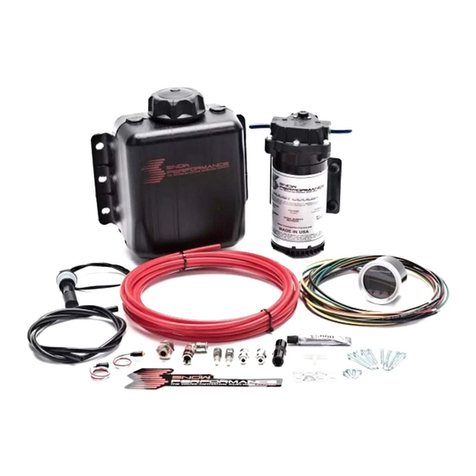
Snow Performance
Snow Performance Boost Cooler 210 instructions
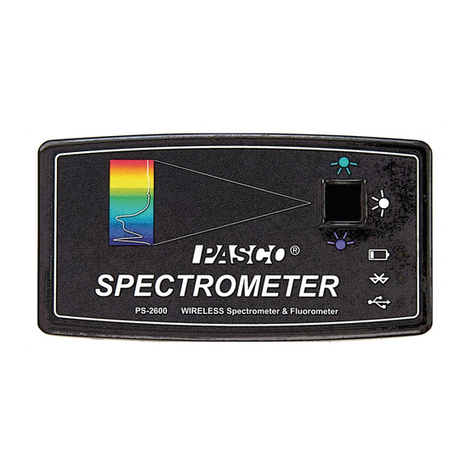
PASCO
PASCO PS-2600A Product guide

Scientifica
Scientifica MDU Setup and operation manual
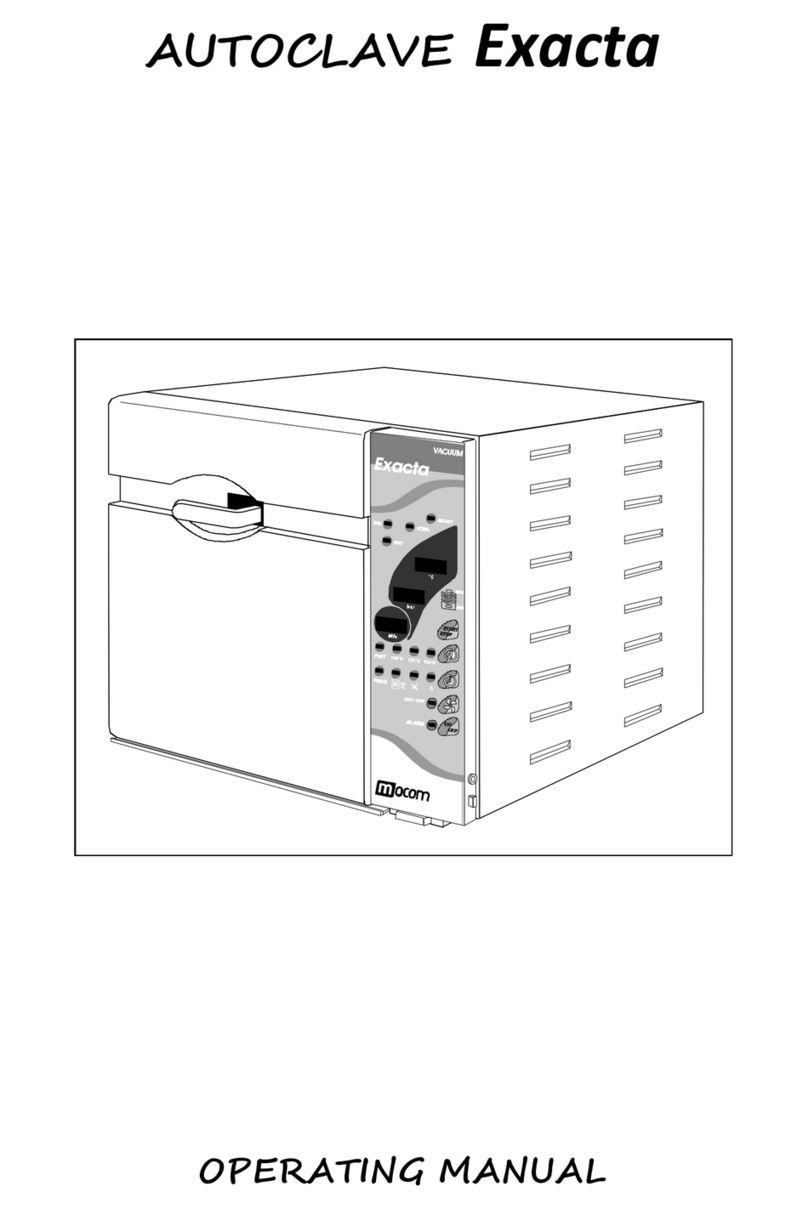
Mocom
Mocom Exacta operating manual

ThermoFisher Scientific
ThermoFisher Scientific HERASAFE 2030i Series operating instructions

Brooks
Brooks CryoPod quick start guide
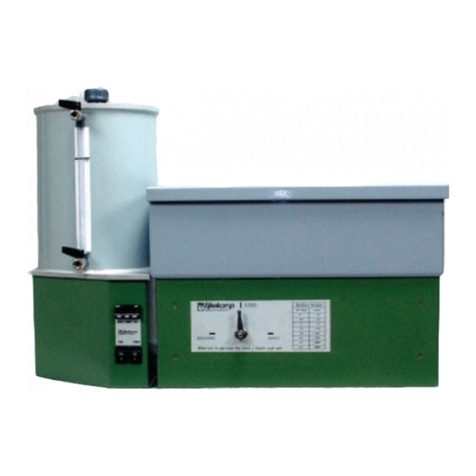
EIJKELKAMP
EIJKELKAMP 08.02 SAND / KAOLIN BOX operating instructions

Elmi
Elmi DOS-10M user manual
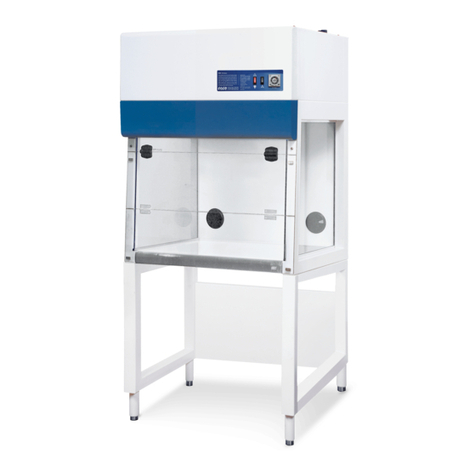
Esco
Esco Streamline SCR-2A Service manual

ORTEC
ORTEC 276 Operating and service manual
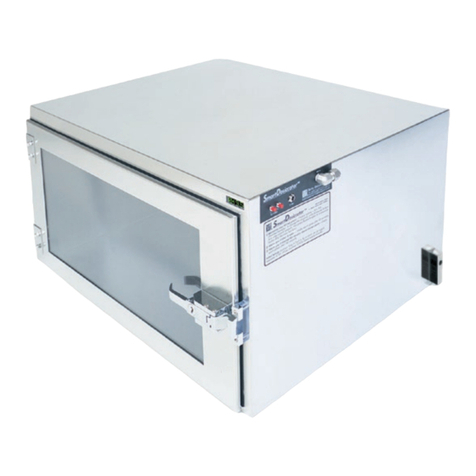
Terra Universal
Terra Universal Smart Desiccator Installation and operating guide
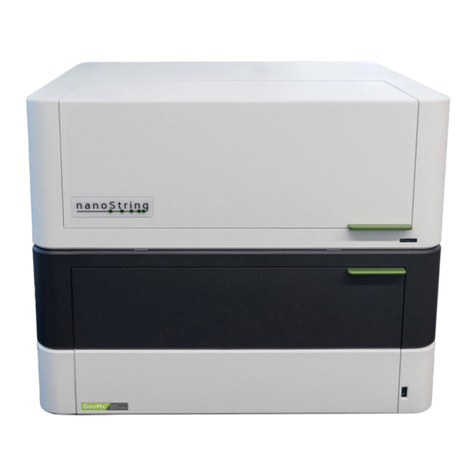
nanoString
nanoString GeoMx DSP user manual
